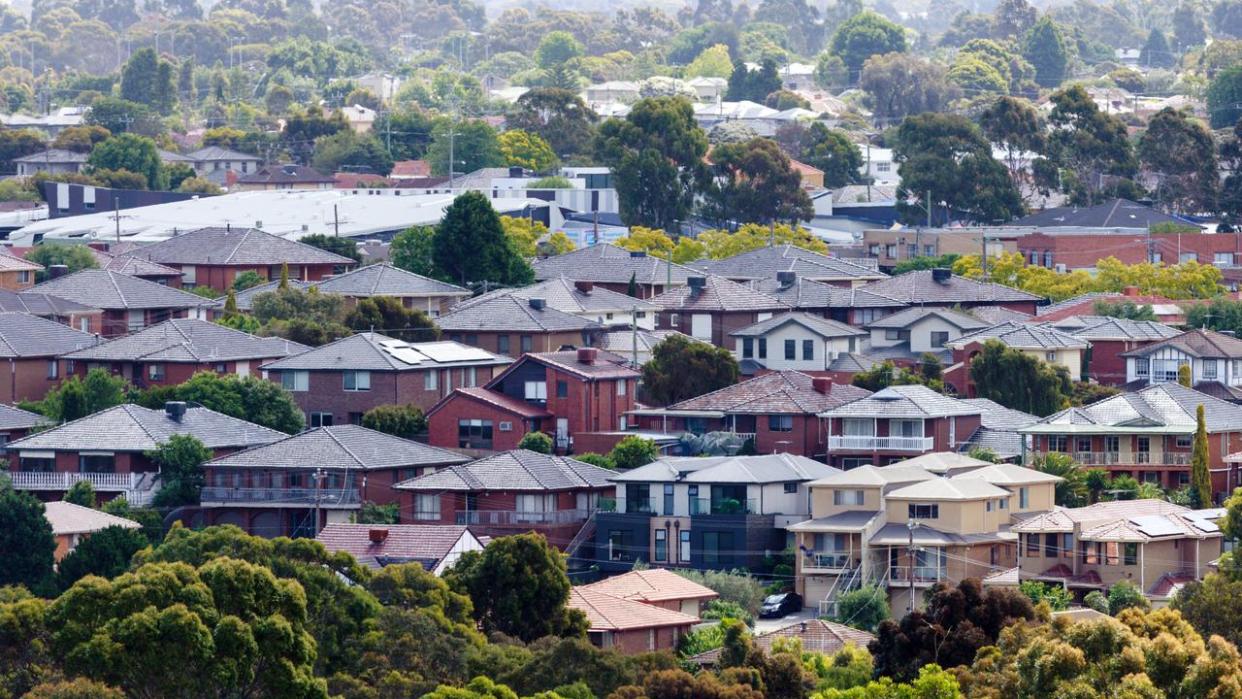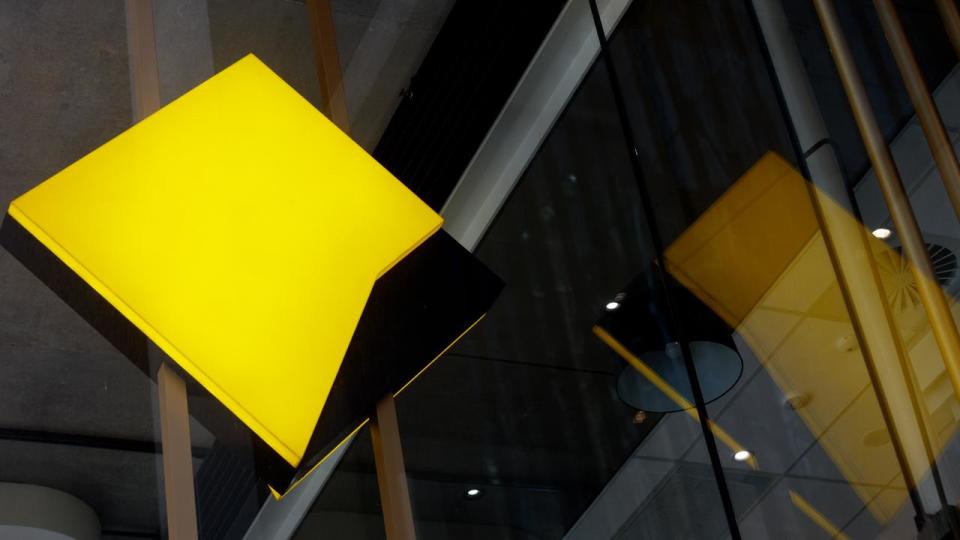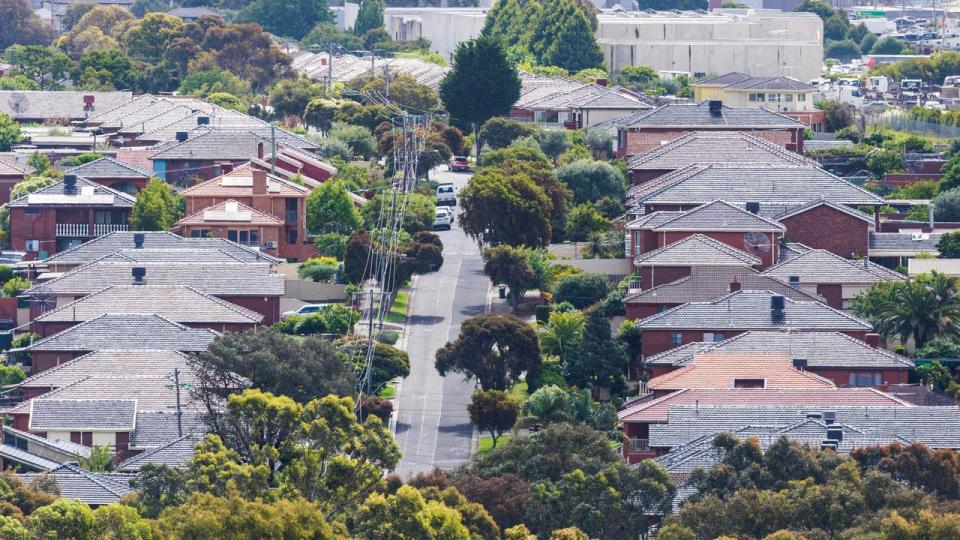Truth behind Aussie mortgage cliff fears

Despite catastrophic predictions of the fixed rate mortgage ‘cliff’ that has generated headlines for months and sowed fears of widespread defaults and increasing arrears, household borrowers have, so far, weathered the interest rate storm.
But with the possibility of fresh rate pain on the horizon, the outlook for borrowers again appears uncertain.
Australia is now more than halfway through a $350 billion transfer from super-cheap fixed rates of roughly 2 per cent to more expensive variable rates of about 6 per cent, according to the most recent Reserve Bank data.
Many borrowers are still struggling to cover the cost of the surge in repayments, but in the main, mortgagors have been well placed to continue paying off their home loans.
More than one million fixed rate loans have already transitioned on to higher variable rates, with this number set to rise to almost 1.5 million by the end of 2023.

The RBA has embarked on the most punishing round of rate hikes in a generation in its efforts to tame persistent inflation. Since May last year, interest rates have climbed by 400 basis points.
Households with an average mortgage size of $585,000 are now paying $1,415 more every month than they were before the RBA started its current tightening cycle.
But despite the rates surge, defaults and arrear rates still sit below their pre-pandemic averages with most borrowers expected to manage their higher repayments when their loans roll off.
“We have seen the peak of the expiring of those fixed rate mortgages,” PropTrack director of economic research Cameron Kushner told NCA NewsWire.
Kushner said despite pockets of pain alongside a broader fall in household consumption and savings, borrowers are handling the transition “reasonably well”.
“It’s usually those things that we don’t see coming that are really problematic – we’ve been talking about this fixed rate mortgage cliff for a number of years now, people have had a lot of scope and time to prepare when this did eventuate,” he says.

Commonwealth Bank, Australia’s largest lender with more than half a trillion dollars worth of home loans on its books, says arrears for loans rolling off fixed rates onto variable rates were aligned with its wider portfolio.
Thirty-day arrears for CBA are just 0.92 per cent while 90 day delinquencies are even lower at 0.43 per cent.
The RBA gives three reasons for this resilience.
First, the enduring strength of Australia’s jobs market has supported household incomes providing much needed funds for repayments.
Second, households have significantly cut back on spending, especially for discretionary products, freeing up funds for the essentials.
Third, the large household saving buffers accumulated during COVID-19 lockdowns has also provided much-needed support. However, most recently the flow of new savings has slowed significantly.
With COVID-19 sweeping the globe, the RBA’s then-strategy of ultra-loose monetary policy, cutting rates to just 0.1 per cent and dishing out support for low cost lending, also helped transform the composition of the home loan market.
Indeed, in the past, borrowers with fixed interest rates were considered somewhat riskier compared to those with variable rates.
However, with the onset of the pandemic, a significant new group of borrowers with fixed loans emerged to capitalise on the exceptionally low rates.

As a result, fixed-rate borrowers began to closely resemble the characteristics of traditional variable-rate borrowers, and the performance of both fixed and variable rate borrowers started to align.
‘At what cost?’
There’s no doubt, however, that many are still facing significant pressure and the impact of soaring interest rates is very uneven across households.
Sebastian Watkins, chief operating officer of Aussie Home Loans owner Lendi, which has almost $100bn loans on its books, says that while arrears are still very low, they have begun to creep higher.
“There is a severe amount of stress and pressure in the system at the moment … We’re going to see some of this pain start to play out in arrears more dramatically as more fixed rates roll off,” Watkins says.
“Australians are fiercely loyal to their mortgage – there are a lot of things they will stop doing before they stop paying their mortgage.”
“Yes, [repayments] are holding up, but at what cost?”
In her maiden address as RBA governor, Michele Bullock echoed these concerns, pointing to the grim statistic that one in 20 households with a variable rate mortgage had been left unable to cover the cost of “essential expenses”.
For highly leveraged borrowers – those with loans amounting to at least four times their household income – Ms Bullock noted that one in four mortgagors were unable to cover costs.

These households, the governor said, were drawing on pandemic-era savings, working extra hours, or forgoing expenses that would be normally considered essential.
At the extreme, Ms Bullock warned that households could be negotiating hardship assistance with their bank or selling their property entirely.
More pain on the horizon?
So what is the outlook for the further 450,000 loans that are set to graduate to variable rates in the new year?
Again, the RBA finds that fixed-rate loans yet to roll off do not appear “materially riskier” than those that have rolled off already, and have already benefited from low interest rates.
“The majority of current fixed-rate borrowers are estimated to have sufficient income to continue meeting their obligations after moving onto higher mortgage payments,” the RBA notes.
According to its analysis, the central bank estimates two-thirds of borrowers who are still on fixed-rate loans have savings equivalent to at least 12 months of scheduled mortgage repayments.
This is about the same level as variable rate owner-occupier borrowers.
But by the RBA’s own admission, there is a smaller cohort of less than one in five borrowers who will roll off onto higher interest rates with much lower savings buffers, equivalent to less than three months of repayments.

This is the group the RBA will be watching closely.
To add to the uncertainty, fresh inflation data released on Wednesday, which came in above economists’ expectations, has increased the likelihood of a November 7 rate increase.
Bond markets are now pricing in a two in three chance the central bank board will raise the cash rate to 4.35 per cent, up from 4.1 per cent, when it meets on Melbourne Cup Day.
Odds for a rate hike by year’s end are now at 88 per cent.
Any move higher will no doubt spell more pain, but with borrowers by and large keeping their head above water, the central bank will likely be confident another rate hike is a risk it can afford to take.


